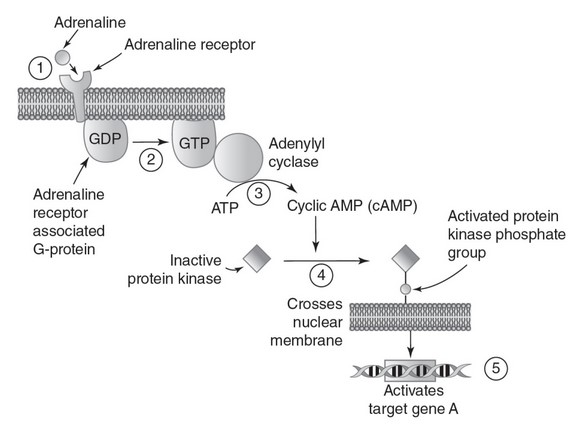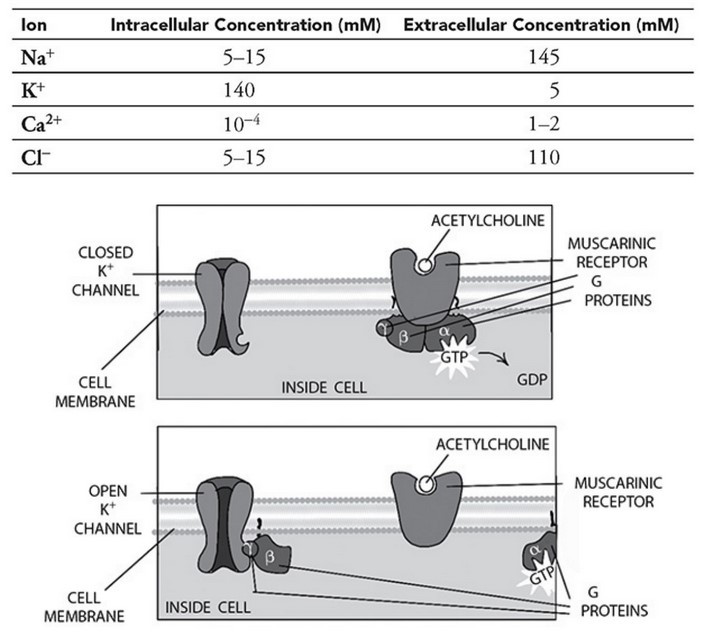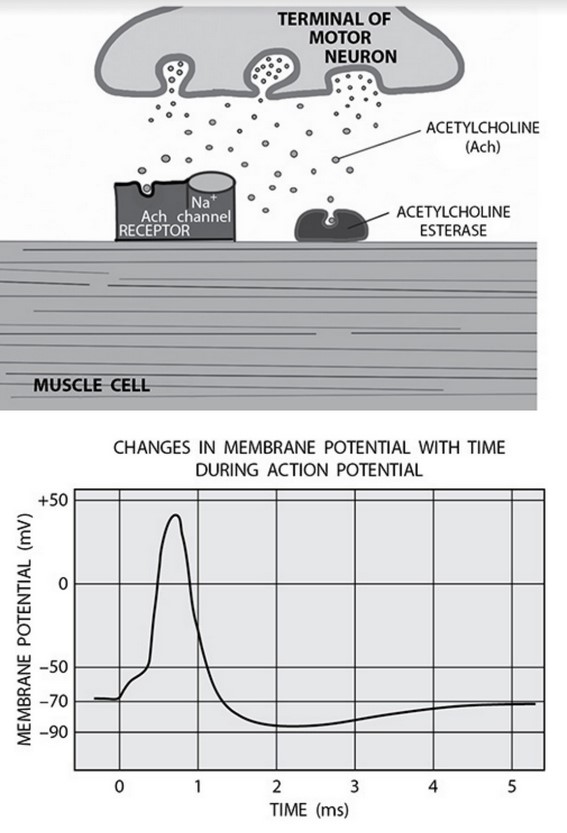Question
A signaling pathway for adrenaline is shown in the following diagram.
Researchers wanted to measure the effects of three different molecules
on the adrenaline signaling pathway. Data are shown in the following
table.
(a) Describe the parts of the cell signaling process that are represented in each of the five numbered steps in the diagram.
(b) Identify the control, the independent variable, and the dependent variables in this experimental procedure.
(c) Analyze the data, and identify which molecule(s) most likely interferes with the enzyme adenylyl cyclase.
(d) Cyclic AMP–dependent phosphodiesterase is an enzyme that breaks down cyclic AMP. Predict the numbered step in the diagram that would be most directly affected by adding cAMP- dependent phosphodiesterase to the cell. Justify your prediction.
▶️Answer/Explanation
Ans:
(a) Step 1 represents reception of the signal. Steps 2, 3, and 4 represent
transduction. Step 5 represents the response.
(b) The control is the cell in which adrenaline alone has been added.
The independent variable is the presence or absence of molecules
X, Y, or Z. The dependent variables are the activation of the G-
protein, the production of cAMP, and the activation of transcription
of target gene A.
(c) Molecule X and molecule Y most likely interfere with adenylyl
cyclase because no cAMP was produced when those molecules
were added to the cells. Molecule Y also most likely interferes with
the GDP on the G-protein receptor since it was never activated.
(d) If cAMP-dependent phosphodiesterase was added to the cell, the
conversion of the inactive protein kinase to activated protein kinase
(step 4) would most likely be affected since that step is dependent
on the presence of cAMP.
Question


Explain how the binding of acetylcholine causes a response in the heart or skeletal muscle. Include a brief explanation of the mechanism by which the same molecule (acetylcholine) can trigger opposite responses in two different but similar cell types (they’re both muscle).
▶️Answer/Explanation
Ans:
The illustration of the heart shows that acetylcholine receptor binding
causes \(K^+\) channels to open. The table shows that \(K^+\) ions are more concentrated inside of cells, so opening \(K^+\) channels would cause \(K^+\) to diffuse out of the cell. \(K^+\) outflux increases the polarity of the membrane by lowering the concentration of positive ions inside the cell, making the inside of the cell “more negative” than at rest. The graph of the action
potential shows that in order for an action potential to occur, the threshold of
about −50 mV must be achieved. \(K^+\) outflow causes the resting potential to be more negative, making it harder to reach threshold. The type of acetylcholine receptor in the heart is called muscarinic. It is
coupled to inhibitory G-proteins that open K+ channels and inhibit adenylyl cyclase (so no cAMP is made). Acetylcholine binding to muscarinic
receptors makes membranes more resistant to depolarization.
The illustration of the skeletal muscle shows that acetylcholine binding
to receptors opens \(Na^+\) channels, which the table shows is more concentrated outside the cell. Opening \(Na^+\) channels would cause an influx of \(Na^+\) ions inside the cell, making the inside of the cell more positive,
moving toward the threshold potential. If enough Na+ ions flow into the cell, threshold potential will be achieved and the membrane will become
depolarized (action potential).
The type of acetylcholine receptor in skeletal muscle and other locations
(except the heart) is called nicotinic. Acetylcholine binding to nicotinic
receptors increases the likelihood of membrane depolarization.
The opposite response can be achieved by the same molecule, acetylcholine, because there are, in this specific case, two different kinds of acetylcholine receptors. They both bind acetylcholine, but the heart version is linked to a K+ channel, whereas the muscle version is linked to a \(Na^+\) channel. This is common in cell signaling—different cell types have different responses to the same situation, so their intracellular response to the same signal is different.
The receptors have the same basic binding site to recognize the chemical
signal, but the receptor may be “hooked up” to different intracellular
“plumbing” that causes the effect.
Question

The figure above represents a generalized hormone-signaling pathway. Briefly explain the role of each numbered step in regulating target gene expression.
▶️Answer/Explanation
• Step 1 = hormone/ligand binding to receptor to initiate/trigger/induce signaling OR signal reception
• Step 2 = an intracellular cascade that transduces/amplifies/transfers the signal from plasma membrane to nucleus (or other cellular effectors)
• Step 3 = transcription/expression of target genes is stimulated/repressed
